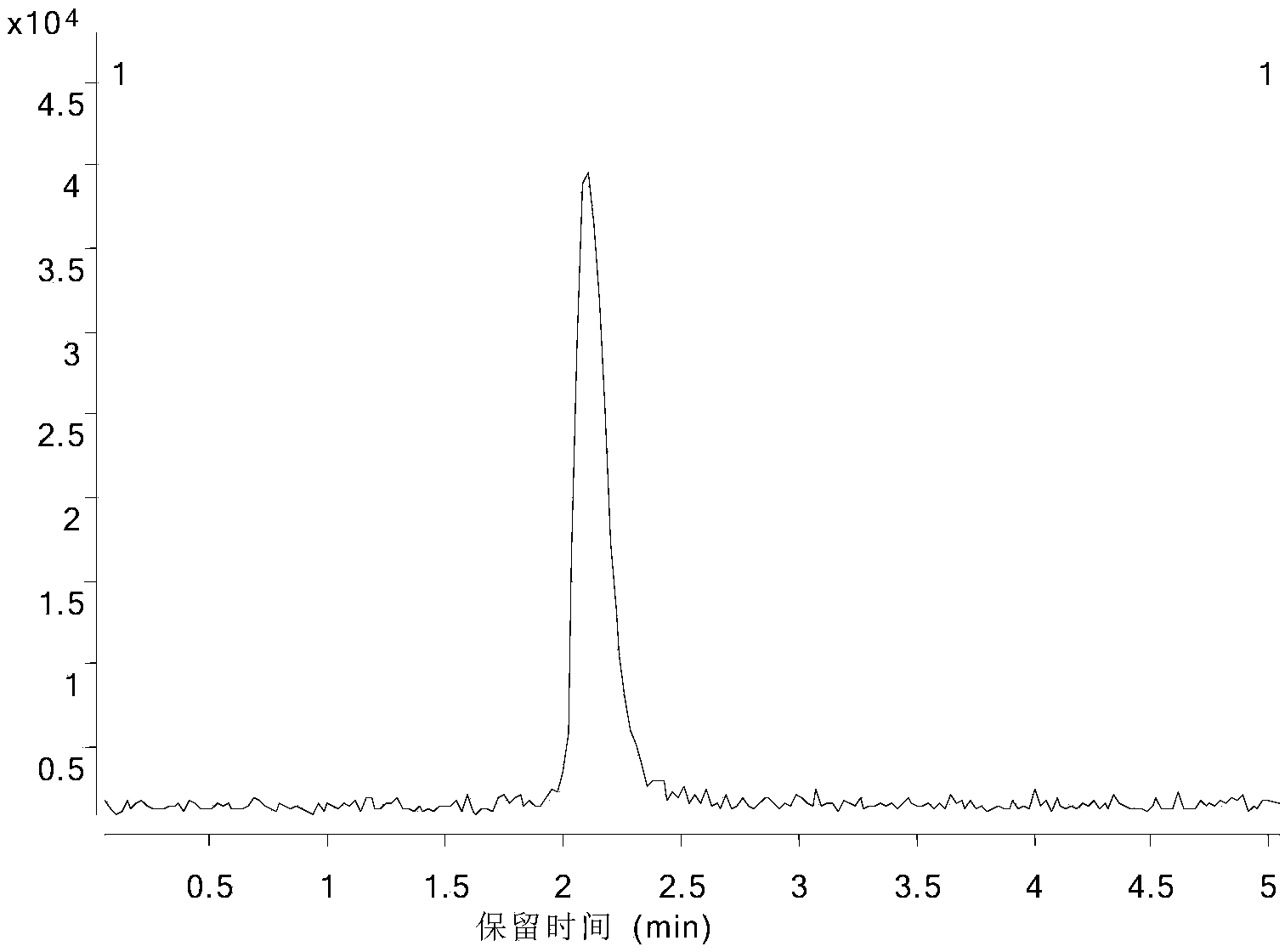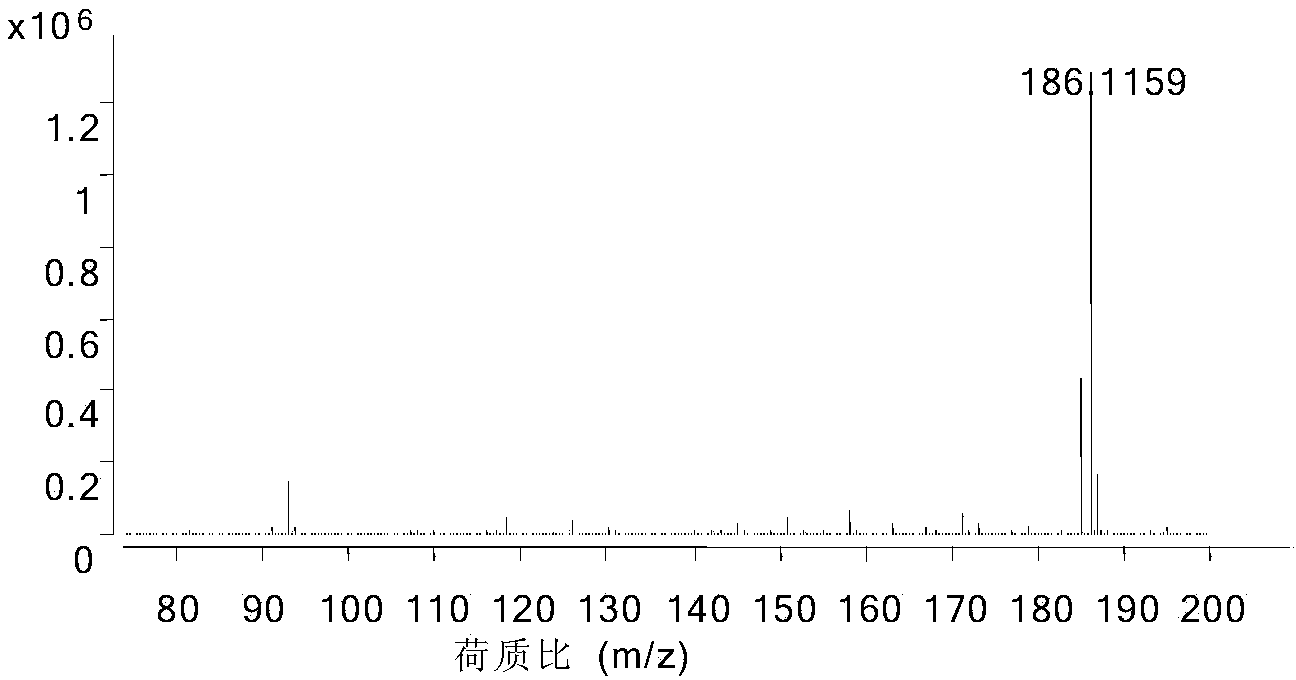Method for measuring residual quantity of paraquat in food
A method of determination, paraquat technology, applied in the field of determination of paraquat residues in food, achieving good repeatability, high sensitivity, and reduced matrix interference
- Summary
- Abstract
- Description
- Claims
- Application Information
AI Technical Summary
Problems solved by technology
Method used
Image
Examples
Embodiment 1
[0038] Example 1: Detection of paraquat residues in apples
[0039] (1) Sample pretreatment
[0040] Weigh 10.0 g of the homogenized apple sample into a 50 mL stoppered plastic centrifuge tube, add 10 mL of aqueous methanol, vortex for 1 min, and centrifuge at 5000 r / min for 5 min. After centrifugation, take 2 mL of the supernatant extract into a centrifuge tube containing 100 mg of C18 and 100 mg of PSA, vortex for 1 min, and centrifuge at 5000 r / min for 3 min. After the supernatant was passed through a 0.22 μm filter membrane, the obtained sample liquid was determined by liquid chromatography-quadrupole time-of-flight tandem mass spectrometry (LC-Q TOF).
[0041] (2) Preparation of standard working solution
[0042]Weigh 25±0.1mg of the standard product into a 25mL plastic volumetric flask, dissolve it with acetonitrile, and dilute to obtain a 1000.0μg / mL standard stock solution; pipette 1.0mL of the standard stock solution into a 100mL plastic volumetric flask, and dilute...
PUM
| Property | Measurement | Unit |
|---|---|---|
| correlation coefficient | aaaaa | aaaaa |
| recovery rate | aaaaa | aaaaa |
Abstract
Description
Claims
Application Information
 Login to View More
Login to View More - R&D
- Intellectual Property
- Life Sciences
- Materials
- Tech Scout
- Unparalleled Data Quality
- Higher Quality Content
- 60% Fewer Hallucinations
Browse by: Latest US Patents, China's latest patents, Technical Efficacy Thesaurus, Application Domain, Technology Topic, Popular Technical Reports.
© 2025 PatSnap. All rights reserved.Legal|Privacy policy|Modern Slavery Act Transparency Statement|Sitemap|About US| Contact US: help@patsnap.com



